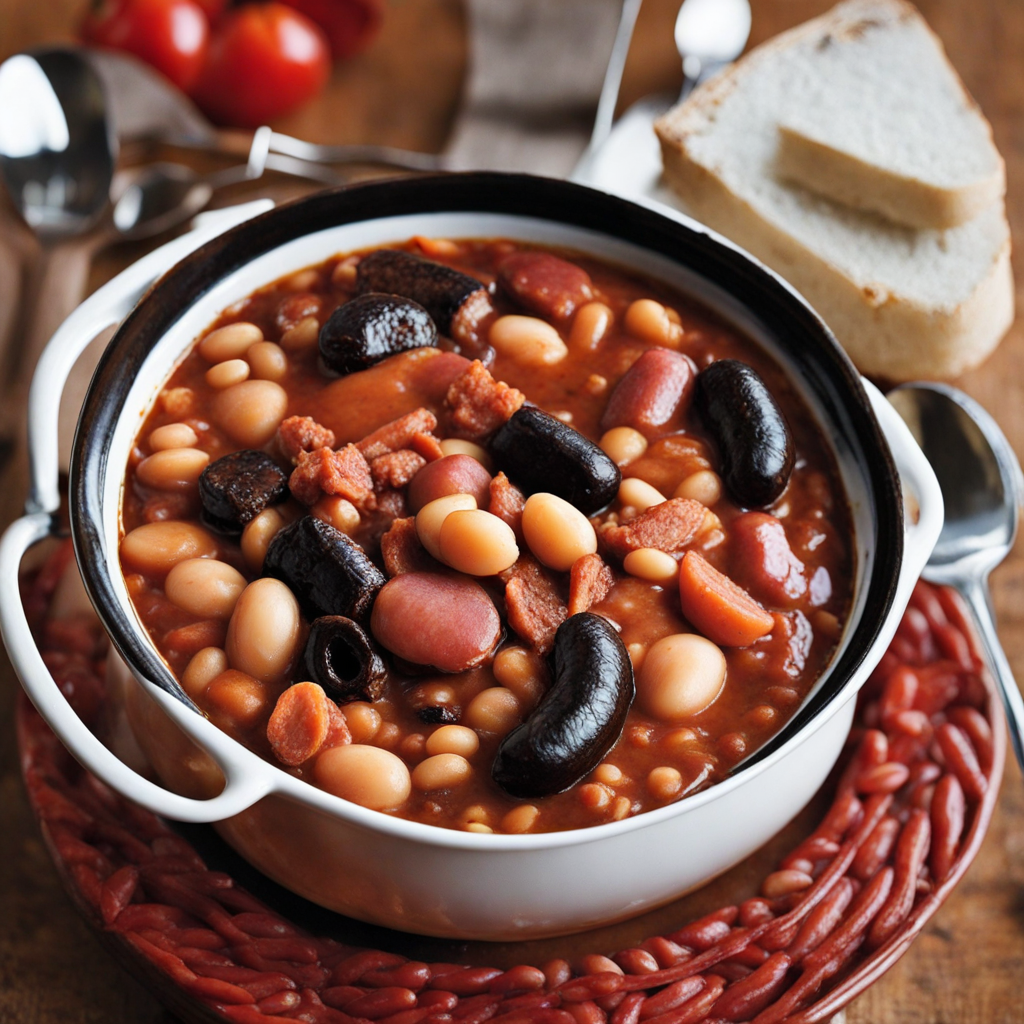Salmorejo
Salmorejo is a traditional Spanish cold soup that hails from the southern region of Andalusia. This dish boasts a creamy texture and a vibrant, rich flavor profile, primarily derived from its main ingredients: ripe tomatoes, bread, olive oil, garlic, and vinegar. The tomatoes are the stars of the show, providing a sweet and slightly tangy base, while the bread contributes to its velvety consistency. The olive oil adds a luxurious richness, and the garlic imparts a subtle kick, making every spoonful a delightful experience. The preparation of Salmorejo is refreshingly simple. The tomatoes are blended until smooth, combined with soaked bread to thicken the mixture, and seasoned with vinegar, salt, and garlic. After blending, the soup is chilled, allowing the flavors to meld beautifully. Traditionally, it's served in a deep bowl and garnished with hard-boiled eggs and pieces of jamón (Spanish cured ham), which add both texture and a savory contrast to the sweet and refreshing soup. Salmorejo is not just a dish; it's a celebration of summer in Spain, evoking the sun-soaked landscapes of Andalusia. It's perfect for hot days, offering a cooling and nourishing option that can be enjoyed as an appetizer or a light main course. With its simple ingredients and bold flavors, Salmorejo is an inviting introduction to the world of Spanish cuisine, promising a delightful culinary experience that is both comforting and invigorating.
How It Became This Dish
Salmorejo: A Chilled Heritage of Spanish Cuisine Salmorejo, a refreshing and creamy cold soup hailing from Spain, is more than just a dish; it is a testament to the rich culinary history and cultural significance of the Andalusian region. With its simple yet vibrant ingredients, salmorejo encapsulates the essence of Mediterranean cuisine, reflecting a harmonious blend of flavors, traditions, and seasonal produce. Origins of Salmorejo The roots of salmorejo can be traced back to the southern regions of Spain, particularly Cordoba, where it is believed to have originated in the 16th century. The name "salmorejo" is thought to derive from the Latin word "salmo," meaning "to salt," combined with "ajo," which means "garlic." This etymology hints at the dish's foundational ingredients, which prominently feature garlic, bread, and olive oil—staples in Mediterranean cooking. Historically, salmorejo emerged as a rustic dish among the working class, designed to be a nutritious, filling meal that could be made with readily available ingredients. It was a practical solution in times when refrigeration was scarce, offering a way to preserve the flavors of ripe tomatoes and to utilize stale bread. The simplicity of its composition reflects a deep connection to the land and the seasons, embracing the bounty of the sun-kissed gardens of Andalusia. Cultural Significance Salmorejo is not just a culinary delight; it carries cultural weight as a symbol of Andalusian identity. In a region famous for its agricultural richness, salmorejo epitomizes the ethos of "from farm to table." The dish is deeply rooted in local traditions, often served during the hot summer months when fresh tomatoes are at their peak. It provides a refreshing reprieve from the heat while celebrating the flavors of Andalusia. In Spanish culture, food acts as a social glue, and salmorejo is no exception. It is frequently enjoyed as a tapa, often shared among friends and family in lively gatherings. The ritual of preparing and sharing salmorejo reflects the communal spirit that characterizes many Andalusian traditions. It is not uncommon to find it served during festive occasions, family gatherings, or even in tapas bars, where people come together to savor the culinary delights of the region. Ingredients and Preparation At its core, salmorejo consists of a few simple ingredients: ripe tomatoes, stale bread, olive oil, vinegar, garlic, and salt. The quality of these ingredients is paramount, as they directly influence the flavor of the final dish. The tomatoes must be ripe and juicy, bursting with sweetness, while the bread should be a rustic type, preferably from the region, to give the soup its creamy texture. The preparation of salmorejo is straightforward yet requires care to achieve the perfect balance of flavors. Traditionally, the ingredients are blended together until smooth, resulting in a thick, velvety consistency. The mixture is then chilled, allowing the flavors to meld and intensify. Salmorejo is typically garnished with chopped hard-boiled eggs and jamón ibérico (cured Iberian ham), adding complexity and richness to the dish. Evolution Through Time As food culture evolved, so did salmorejo. The late 20th century witnessed a resurgence of interest in traditional Spanish cuisine, leading to a renaissance of dishes like salmorejo. Chefs began experimenting with the classic recipe, introducing innovative twists that would appeal to modern palates while retaining the essence of the dish. In contemporary gastronomy, salmorejo has transcended its humble origins. It has gained a place in fine dining establishments, where chefs creatively reinterpret the dish. Some versions incorporate additional ingredients such as herbs, spices, or even fruits, enhancing the flavor profile and presenting it in visually stunning ways. There are also variations that explore different textures, from smooth to chunky, showcasing the versatility of this beloved soup. The rise of global culinary influences has also seen salmorejo embraced beyond the borders of Spain. International diners have come to appreciate its refreshing flavor and its suitability for various dietary preferences. As a result, it has found its way onto menus in restaurants around the world, showcasing the universal appeal of fresh, healthy ingredients. Salmorejo in the Modern Era Today, salmorejo is celebrated not only in its native Andalusia but also throughout Spain and beyond. It is a staple in Spanish cuisine, often featured in cookbooks, food blogs, and culinary shows. The increasing popularity of Mediterranean diets, known for their health benefits, has further bolstered salmorejo's status as a nutritious and flavorful option. Moreover, the rise of food tourism has seen many visitors flock to Andalusia to experience the authentic taste of salmorejo in its birthplace. Culinary festivals and local markets often highlight this dish, allowing travelers to engage with the local culture and history through food. The global pandemic, which prompted many to explore cooking at home, also played a role in the resurgence of traditional dishes like salmorejo. As people sought comfort in familiar flavors, the simplicity and heartiness of this cold soup became a staple in many households, proving once again that food has the power to connect us to our roots, no matter where we are. Conclusion Salmorejo stands as a testament to the enduring nature of culinary traditions and their ability to evolve while remaining true to their origins. It is a dish that tells a story of place, culture, and community, inviting all who partake to savor the rich flavors of Andalusia. From its rustic beginnings to its modern interpretations, salmorejo continues to be a cherished part of Spanish gastronomy, embodying the spirit of sharing and the joy of good food. In every bowl, one can taste not just the ingredients, but the essence of a culture steeped in history and passion for culinary excellence.
You may like
Discover local flavors from Spain







